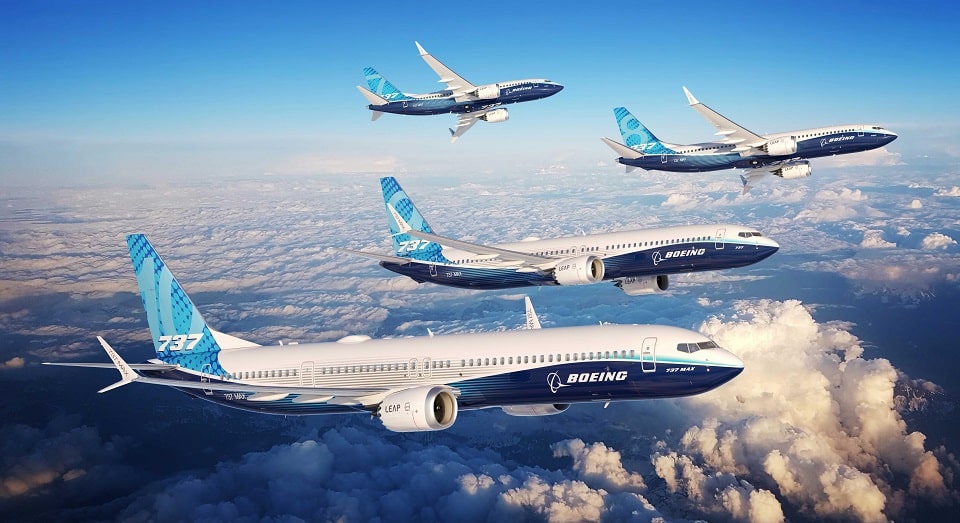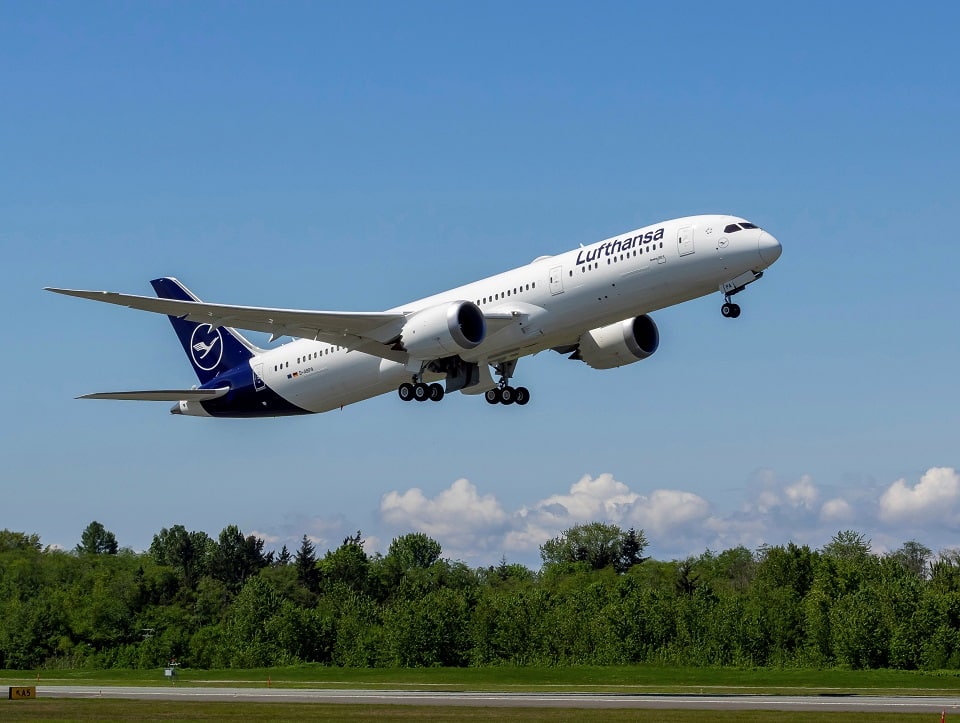Airlines
Boeing predicts demand for 42,600 new commercial jets over next 20 years

Boeing predicted that by 2042, there would be a $8 trillion global demand for 42,595 new commercial planes due to an increase in both local and international aviation traffic. In anticipation of the Paris Air Show, Boeing published its 2023 Commercial Market Outlook (CMO), a forecast of the demand for commercial aircraft and services over the next 20 years.
Boeing Forecasts Demand for More than 41,000 New Airplanes by 2041(Opens in a new browser tab)
The new CMO comes three years after the pandemic grounded most of the global fleet. Key findings include:
- Passenger traffic continuing to outpace global economic growth of 2.6%.
- The global fleet nearly doubling to 48,600 jets, expanding 3.5% per year.
- Airlines replacing about half of the global fleet with new, more fuel-efficient models.
Boeing’s projections for regional demand and key trends through 2042 include:
- Asia-Pacific markets to represent more than 40% of global demand with half of that total in China.
- South Asia’s fleet will expand more than 7% annually, the world’s fastest rate, with India accounting for more than 90% of the region’s passenger traffic.
- North America and Europe each will account for about 20% of global demand.
- Low-cost carriers will operate more than 40% of the single-aisle fleet in 2042, up from 10% 20 years ago.
- After omitting demand for Russia and Central Asia in last year’s CMO due to uncertainty in the region, this year’s forecast covers Russia and Central Asia in the Eurasia region, which comprises about 3% of the global fleet by 2042.
- Commercial Services forecasts a total served market worth $3.8 trillion, including digital solutions that increase efficiency and reduce cost; robust demand for parts and supply chain solutions; growing maintenance and modification options; and effective training to enhance safety and support the pilot and technician pipeline.
Also in the 20-year forecast period, Boeing anticipates demand for these models:
- New single-aisle airplanes will account for more than 75% of all new deliveries, up slightly from the 2022 outlook, and totaling more than 32,000 airplanes.
- New widebody jets will be nearly 20% of deliveries, with more than 7,400 airplanes enabling airlines to open new markets and serve existing routes more efficiently.
- Air cargo will continue to outpace global trade growth, with carriers requiring 2,800 dedicated freighters. This includes more than 900 new widebodies as well as converted narrow-body and widebody models.

Airlines
German Carrier Lufthansa Plans for 20% Job Cuts in Administration

Lufthansa Airlines is reportedly planning significant job cuts in its administrative workforce. According to Manager Magazin, the German carrier intends to reduce administrative positions by 20% as part of its cost-cutting measures amidst an anticipated decline in earnings.
This reduction could impact approximately 400 jobs, the report revealed. While Lufthansa has not directly commented on the layoffs, the airline confirmed its goal of cutting administrative costs by 20% by 2028.
Russian Su-57 Fighter Secures First International Sale at Zhuhai Airshow
The strategy involves leveraging digital technologies, including artificial intelligence and automation. “A hiring freeze is currently in place for administrative roles at Lufthansa Airlines,” said a company spokesperson.
The staff reduction is expected to occur through natural attrition and age-related turnover, rather than forced layoffs. The internal projection cited by the magazine warns that Lufthansa could face an operating loss of €800 million ($843.92 million) by 2026 if no corrective measures are taken.
Lost Tool Found in Qantas A380 After 34 Flights
The report highlights the challenges companies face in aligning workforce requirements with current and future demands. Failure to adapt could necessitate drastic actions, such as restructuring and layoffs, which carry significant repercussions for both the organization and its employees.
As Lufthansa navigates these challenges, the airline appears committed to balancing cost efficiency with digital transformation to maintain its competitiveness in a rapidly evolving industry.
-

 Aviation2 months ago
Aviation2 months agoBoeing confirms 797: A New Era for Mid-Size Aircraft
-

 Aviation2 months ago
Aviation2 months agoMicrosoft Flight Simulator Raises $3 Million to Bring Back the An-225 Mriya
-

 Aviation2 months ago
Aviation2 months agoLockheed and Tata Team Up to Build C-130J MRO Facility in India
-

 Airlines2 months ago
Airlines2 months agoQantas Engineers Stage Walkout Over Cost of Living Concerns
-

 Airlines2 months ago
Airlines2 months agoQatar Citizens Can Travel to the United States Without a Visa
-

 Aviation2 months ago
Aviation2 months agoBoeing Offers 25% Pay Increase & Promise to Build Next Plane in Seattle
-

 Aviation2 months ago
Aviation2 months agoQatar Airways bans these new Electronic Devices on plane
-

 Airlines2 months ago
Airlines2 months agoEmirates Ends 28-Year Singapore-Melbourne Fifth Freedom Route








